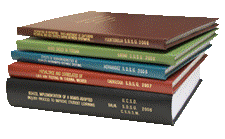Libraries, University of Nebraska-Lincoln

Archival Master’s Theses from the University of Nebraska-Lincoln
Date of this Version
8-1994
Document Type
Thesis
Citation
Thesis (M.S.)—University of Nebraska—Lincoln, 1994. Department of Textiles, Clothing and Design.
Abstract
Profiles of Nebraskan quiltmaking groups and quilts made by those groups between 1880 and 1989 were developed using data collected during twenty-seven Nebraska Quilt History Days and information garnered from telephone interviews. Quiltmaking by Nebraska groups peaked in the 1920s and 1930s and again in the 1970s and 1980s when American quiltmaking enjoyed its first and second twentieth century revivals. Most of the groups were non-church affiliated organizations. These groups included sewing clubs/quilting groups or guilds, social clubs, municipal groups, Cooperative Extension clubs, fraternal associations, and senior center groups. Group membership was between 15 to 24 members until the 1980s when membership increased to over 50. Most groups consisted of female members, had officers, met once a month in a member’s home, and were active from 1 to 24 years or 50 to 74 years.
Nebraska groups most often made pieced quilts and embroidered quilts. The four most prevalent pieced quilt patterns were the Friendship Chain, Dresden Plate, Nine Patch, and Friendship Star. Most quilts were made from new cotton fabrics and contained embroidered inscriptions bearing dates and names. Most group-made quilts were hand quilted in an outline quilting pattern. The average number of quilting stitches per inch was 6.6 stitches. Quilting of group-made quilts was undertaken most often by the group which constructed the quilt top. The largest quilts were made in the 1970s and 1980s. The most common purposes for making group-constructed quilts were special occasions, special persons, or fund-raising.
Advisor: Patricia Cox Crews


Comments
Copyright 1994, the author. Used by permission.